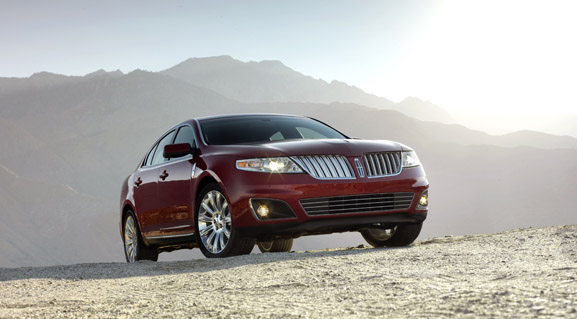Moray Callum
It’s easy to observe both the shrewdness and energy that brought Callum to the top tier of Ford’s product-and-design operations after a 20-year career with the Dearborn, Michigan-based car maker. His natural forcefulness tends to shine through. “Design is something you have to be a leader in,” he says. “Consumers are crying out for it.”
And for Callum, design is largely about branding. “Differentiation” is a word he uses repeatedly. “All future Ford models need to be very distinct and visually dynamic,” the plain-spoken design chief says. “Expectations for design are very high.”
Since his appointment in May, he is responsible for the design of all Ford vehicles coming out of the company’s North and South America design studios and oversees the design of Lincoln and Mercury vehicles. Callum reports to Ford veteran J Mays, now the carmaker’s chief creative officer, responsible for the “design direction” of Ford’s global brands—Ford, Lincoln, and Mercury.
Although Callum is nominally in charge of design in the Americas, he is closely involved with Ford worldwide. His attention turns to Fiesta, a sub-compact Euro Ford that’s been well received in Britain and which will be introduced to US consumers in 2010. He says he’s pleased the world is turning back to small cars like Fiesta.

Callum’s confidence reflects long experience. After earning degrees from Napier University in Edinburgh and the Royal College of Art in London, Callum enjoyed the vagabond career of the design star, with high-profile stints at Chrysler, Peugeot-Citroen, and the Ghia design studio as well as a particularly successful period at Mazda. With the Japanese carmaker, Callum supervised the design of several critical favorites, including the MX-5 and the CX-7 crossover.
Callum’s rapid-fire observations go pinging off every issue in car making: engineering issues, craftsmanship, even the pulse of the market. Design innovation seems constantly on his mind. He describes a new technology, the MyFord Touch, as a “real breakthrough in the use of touchpad technology that people already know from their personal communication devices.” The soft-touch panel adds both digital design and interactivity to the plane formerly known as the dashboard; the display includes a digital clock and a distance-to-empty indicator. The touch screen makes the car feel almost like a drivable iPhone: a communication device with wheels.
Style is also the deal closer for hybrids, Callum insists. “We don’t want to make a compromise on hybrids,” he says. “People expect a good looking car, hybrid or not,” he adds.
The wonderful thing about design is that it costs nothing, according to Callum. “The perceived value of the design does not cost you anything more to manufacture the car,” he says. The difference between the two is that one sells and the other doesn’t. “Design tips the scale,” says Ford’s czar of style.
Images courtesy of Ford Motor Company.


